Hors d’Oeuvres
Hors d’oeuvres, those delightful bite-sized appetizers, are the unsung heroes of any gathering. Whether you’re hosting an elegant dinner party, a casual get-together, or a festive celebration, these small yet flavorful dishes set the tone for the entire event.
The term “hors d’oeuvre,” French for “outside the work,” reflects their role in tantalizing guests before the main course. Originating from French culinary traditions, hors d’oeuvres have evolved into a global phenomenon, showcasing various flavors and ingredients.
From classic canapés and delicate amuse-bouches to innovative fusion creations, hors d’oeuvres offer a canvas for culinary creativity. They can be as simple as a perfectly seasoned olive or as intricate as a miniature tartlet bursting with gourmet ingredients. The beauty of hors d’oeuvres lies in their versatility—they can be tailored to any theme, dietary preference, or season, making them an essential part of entertaining.
In this post, we will explore the art of hors d’oeuvres, delving into their history, sharing tips for perfect presentation, and providing a selection of recipes that will impress your guests. Whether you’re a seasoned host or a novice in the kitchen, the satisfaction of elevating your appetizer game and leaving a lasting impression on your guests is a feeling like no other. You’ll find inspiration to do just that and more.
History of Hors d’oeuvres
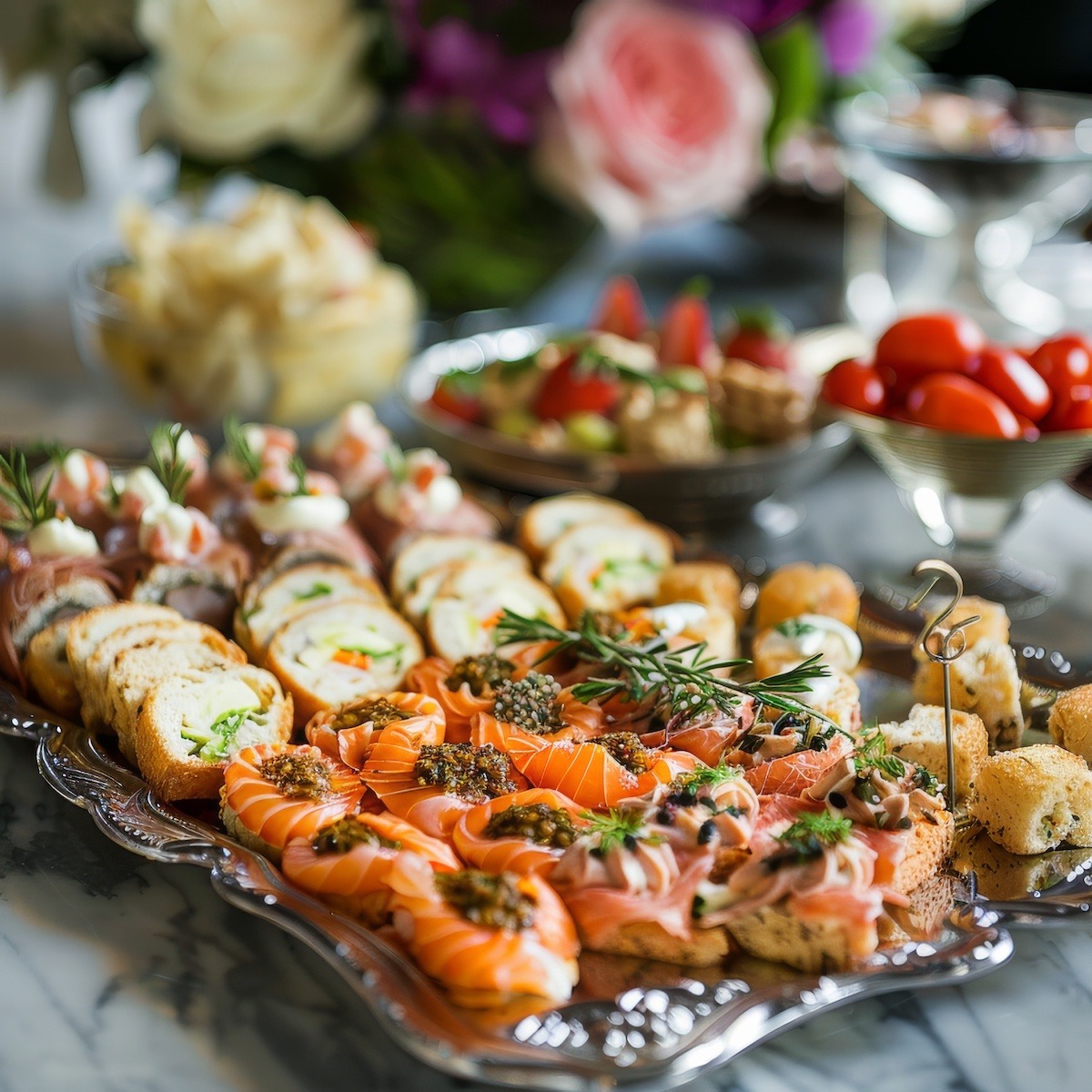
The history of hors d’oeuvres is a fascinating journey through culinary evolution, reflecting societal changes, dining customs, and gastronomic innovation. “hors d’oeuvre” is French, translating to “outside the work,” signifying their role as appetizers served before the main course. This concept of small, bite-sized starters traces back to ancient civilizations.
Ancient Beginnings
In ancient Rome and Greece, small portions of food were served to guests to stimulate their appetite before the main meal. These early appetizers included olives, nuts, and fruits, which were easy to prepare and could be consumed quickly. Such traditions laid the groundwork for the future development of hors d’oeuvres.
Medieval and Renaissance Europe
During the Medieval period, the tradition of serving appetizers became more refined. Europe’s wealthy and noble classes began to serve elaborate banquets with multiple courses. Appetizers often served on trenchers (thick slices of bread used as plates) included spiced meats, cheeses, and seafood. The Renaissance period saw the influence of Italian cuisine spread across Europe, introducing a variety of antipasti, which were the predecessors of modern hors d’oeuvres.
17th and 18th Centuries
In the 17th century, France emerged as a culinary center, and serving hors d’oeuvres gained popularity. French chefs experimented with new techniques and ingredients, creating intricate and beautifully presented appetizers. The rise of French haute cuisine in the 18th century solidified the importance of hors d’oeuvres in fine dining.
19th Century and Beyond
By the 19th century, hors d’oeuvres had become a staple in formal dining across Europe and beyond. The tradition of serving these appetizers spread to Russia, known as zakuski, and Spain, where they evolved into tapas. In England, they were referred to as “savouries.”
Hors d’oeuvres adapted to changing lifestyles and tastes in the 20th century. The rise of cocktail parties in the 1920s and 1930s popularized finger foods and canapés, which could be quickly eaten while mingling. This era also introduced new ingredients and global influences, leading to a diverse range of hors d’oeuvres.
Modern Day
Today, hors d’oeuvres are a vital part of culinary traditions worldwide. They have evolved to include a wide array of flavors, ingredients, and presentation styles, reflecting the globalization of food culture. From sophisticated amuse-bouches in fine dining restaurants to simple yet elegant bites at home gatherings, hors d’oeuvres remain a versatile and beloved element of modern cuisine.
Examples of Various Hor d’Oeuvres
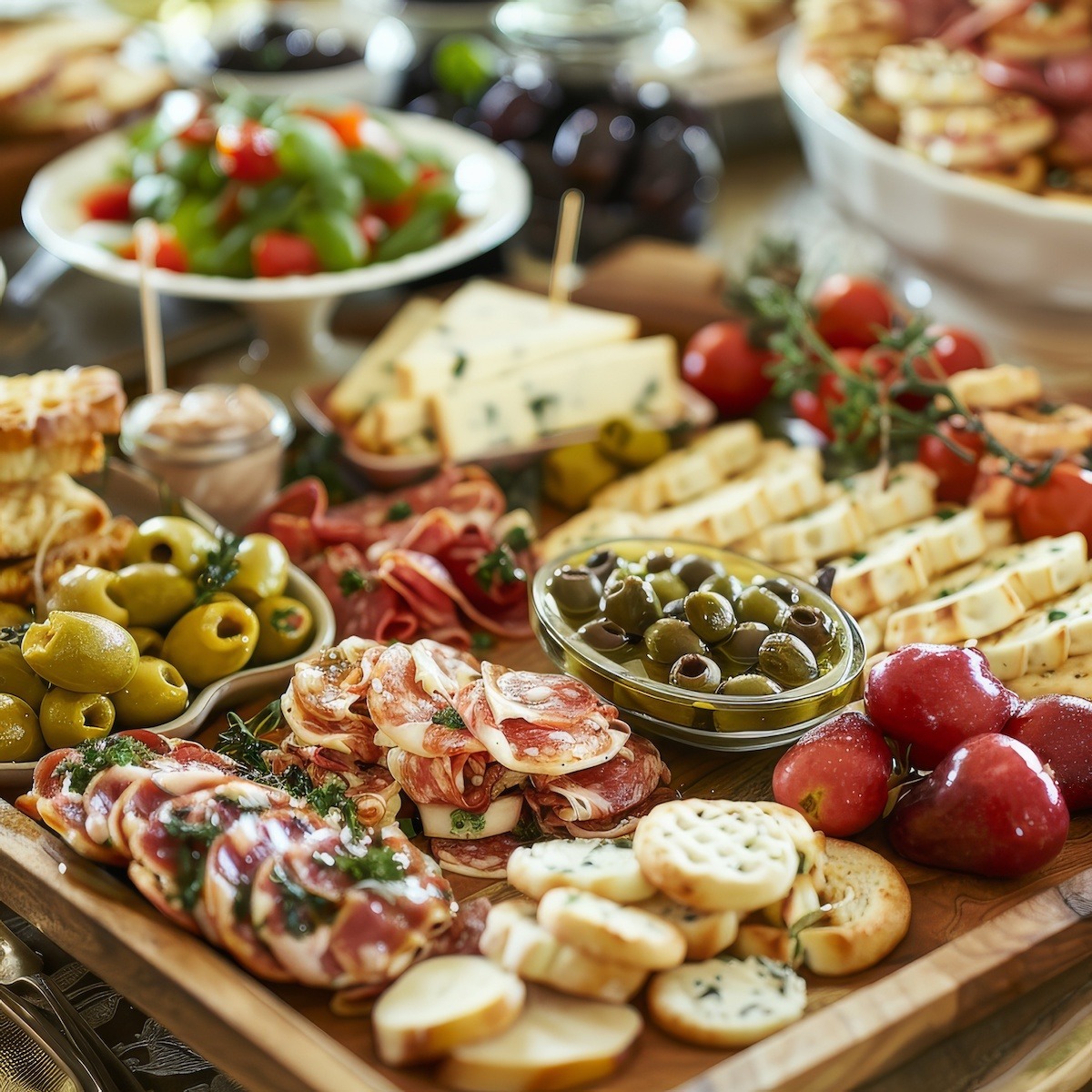
1. Bruschetta
A classic Italian appetizer, bruschetta consists of toasted bread slices topped with diced tomatoes, garlic, basil, and olive oil. Variations can include toppings like mozzarella, prosciutto, or balsamic glaze.
2. Stuffed Mushrooms
These savory bites feature mushroom caps filled with breadcrumbs, cheese, herbs, and sometimes sausage or crab. They are baked until golden and are a favorite at many gatherings.
3. Deviled Eggs
A timeless favorite, deviled eggs are hard-boiled eggs cut in half, with the yolks mixed with mayonnaise, mustard, and spices, then piped back into the egg whites. They are often garnished with paprika, chives, or bacon bits.
4. Shrimp Cocktail
This elegant appetizer includes chilled, cooked shrimp with a tangy cocktail sauce, typically made from ketchup, horseradish, lemon juice, and Worcestershire sauce. It’s often presented on a bed of ice.
5. Caprese Skewers
Inspired by the classic Caprese salad, these skewers feature cherry tomatoes, fresh mozzarella balls, and basil leaves drizzled with balsamic reduction or olive oil. They are colorful and refreshing.
6. Mini Quiches
These small, savory tarts come with various fillings such as spinach and feta, bacon and cheddar, or mushroom and Swiss cheese. They are baked in a flaky pastry crust and served warm or at room temperature.
7. Spring Rolls
A light and crunchy appetizer, spring rolls are typically filled with vegetables, noodles, and sometimes shrimp or pork, wrapped in rice paper and served with a dipping sauce like peanut or sweet chili.
8. Crostini with Various Toppings
Crostini are small slices of toasted bread topped with various ingredients, such as goat cheese, roasted red peppers, smoked salmon and dill cream, or pear and blue cheese. They are versatile and flavorful.
9. Mini Sliders
These small burgers are often made with beef, chicken, or pulled pork and topped with cheese, pickles, and condiments. They are served on mini buns and are perfect for more casual gatherings.
10. Prosciutto-Wrapped Melon
This simple yet elegant appetizer features sweet melon slices, such as cantaloupe or honeydew, wrapped in thin slices of salty prosciutto. The combination of flavors is both refreshing and satisfying.
And Then There Are Canapés
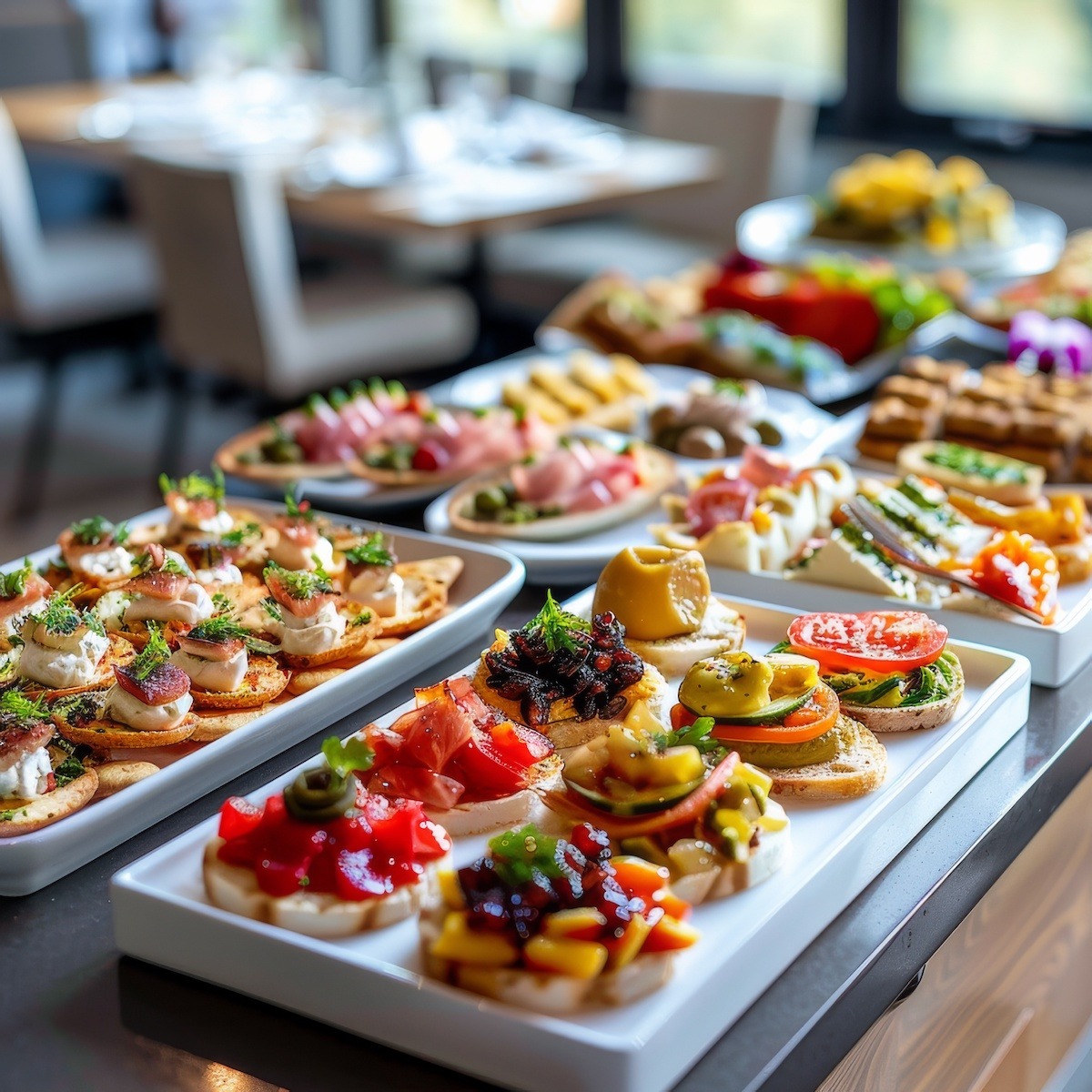
A canapé is a specific type of hors d’oeuvre characterized by its structure. It typically consists of a small piece of bread, toast, or cracker topped with various savory ingredients.
Canapés usually have a base (such as bread or a cracker), a spread (like cream cheese, pâté, or hummus), a main item (such as smoked salmon, cheese, or roast beef), and a garnish (such as herbs, caviar, or sliced vegetables).
Canapés are often more elaborately presented and are designed to be eaten in one or two bites. They are usually served at formal events and are meant to be easy to handle and eat while standing.
1. Smoked Salmon and Cream Cheese
A classic canapé featuring a base of pumpernickel or rye bread topped with a dollop of cream cheese, a slice of smoked salmon, and garnished with capers, red onion, and a sprig of dill.
2. Brie and Cranberry
A delightful combination of creamy brie cheese and tangy cranberry sauce, it’s served on a small toasted baguette or a cracker. For added flavor, it’s often garnished with a small herb sprig.
3. Goat Cheese and Sun-Dried Tomato
A crisp bread or cracker base topped with a dollop of tangy goat cheese and a piece of sweet, chewy sun-dried tomato. Sometimes, it is finished with a drizzle of olive oil or a sprinkle of fresh herbs.
4. Caviar and Crème Fraîche
This luxurious option features a small blini or toast point topped with a dab of crème fraîche and a spoonful of high-quality caviar. It is garnished with a tiny piece of chive or dill.
5. Roast Beef and Horseradish
Thin slices of roast beef served on a small piece of toasted bread or a crisp cracker, topped with a dollop of horseradish cream and a garnish of microgreens or chives.
6. Pesto and Mozzarella
A fresh and flavorful option with a base of toasted bread or cracker spread with pesto, topped with a small mozzarella ball or slice and garnished with a cherry tomato half and a basil leaf.
7. Avocado and Shrimp
A crisp bread or cracker topped with a slice of ripe avocado and cooked shrimp. Often finished with a squeeze of lime juice, a sprinkle of sea salt, and a dash of paprika or chili powder.
8. Blue Cheese and Walnut
A strong-flavored canapé with a base of baguette or cracker, topped with a small wedge of blue cheese, a drizzle of honey, and a piece of walnut. The flavors blend beautifully for a sweet-savory combination.
9. Chicken Liver Pâté
Rich and creamy chicken liver pâté spread on a piece of toasted bread or a cracker, garnished with a small slice of cornichon (pickled gherkin) or a dollop of fruit chutney.
10. Hummus and Roasted Red Pepper
A healthy and colorful canapé featuring a base of pita chip or crispbread topped with a spoonful of hummus and a slice of roasted red pepper. Often garnished with a sprinkle of paprika or a parsley leaf.

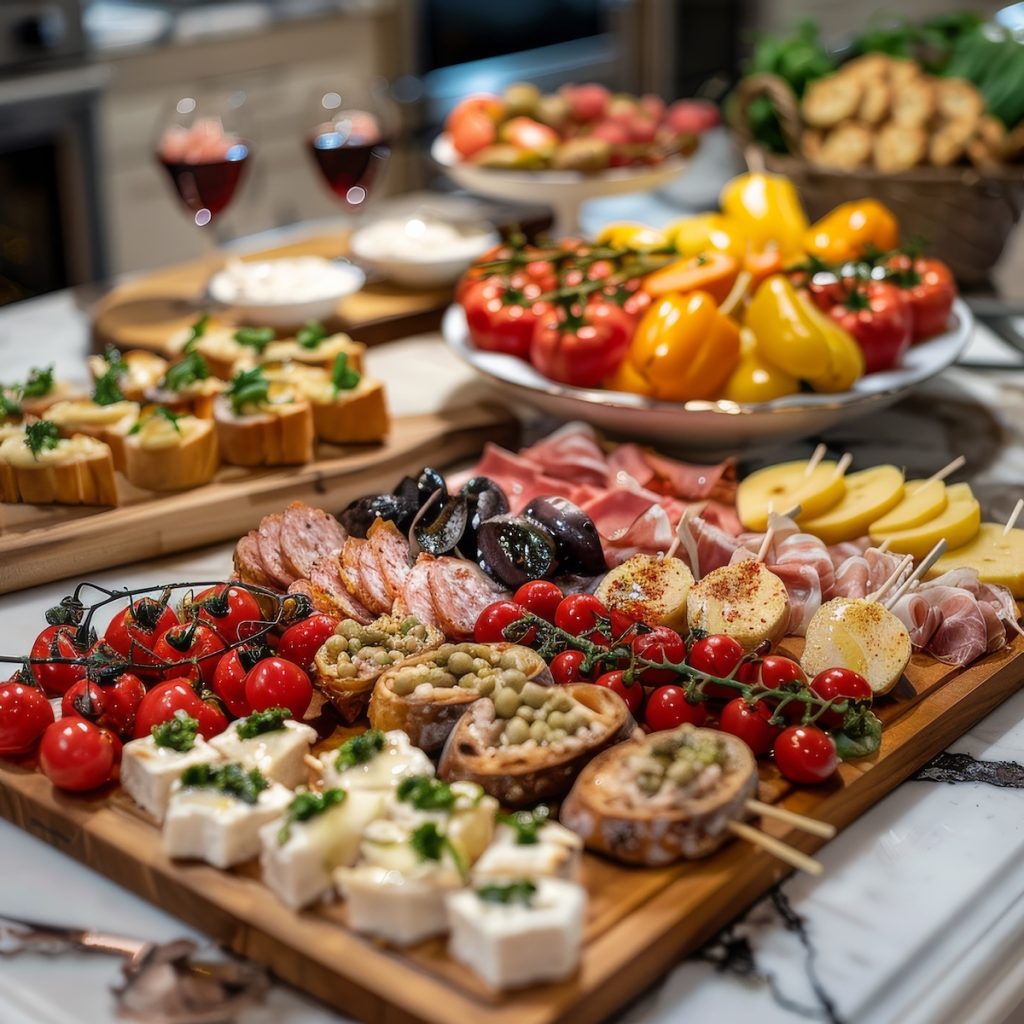




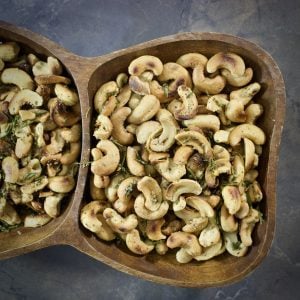

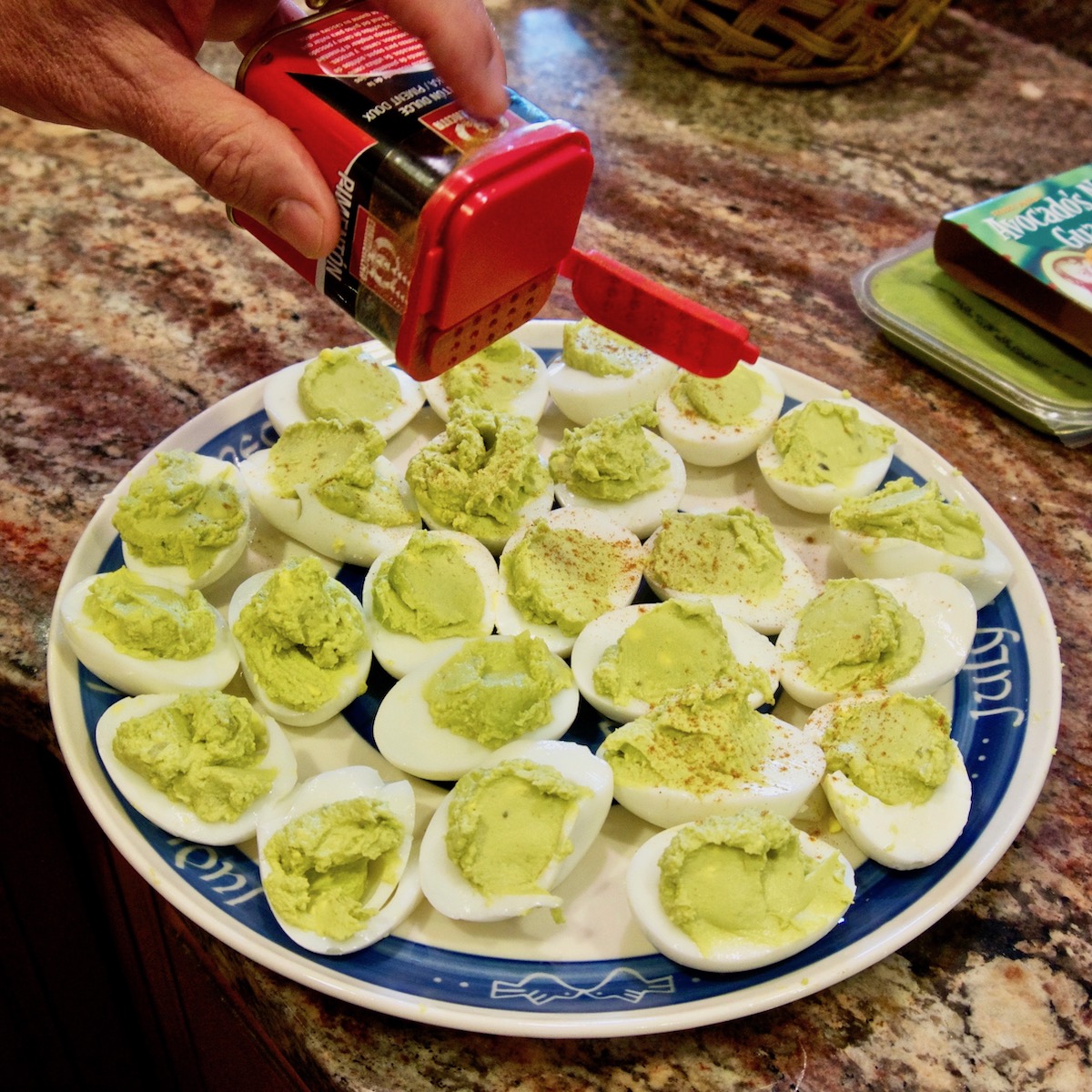
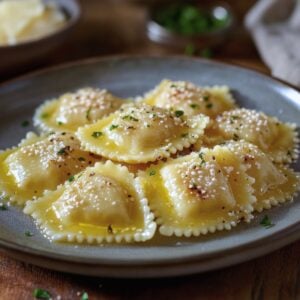

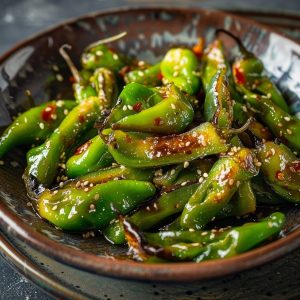
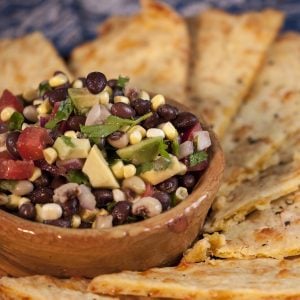
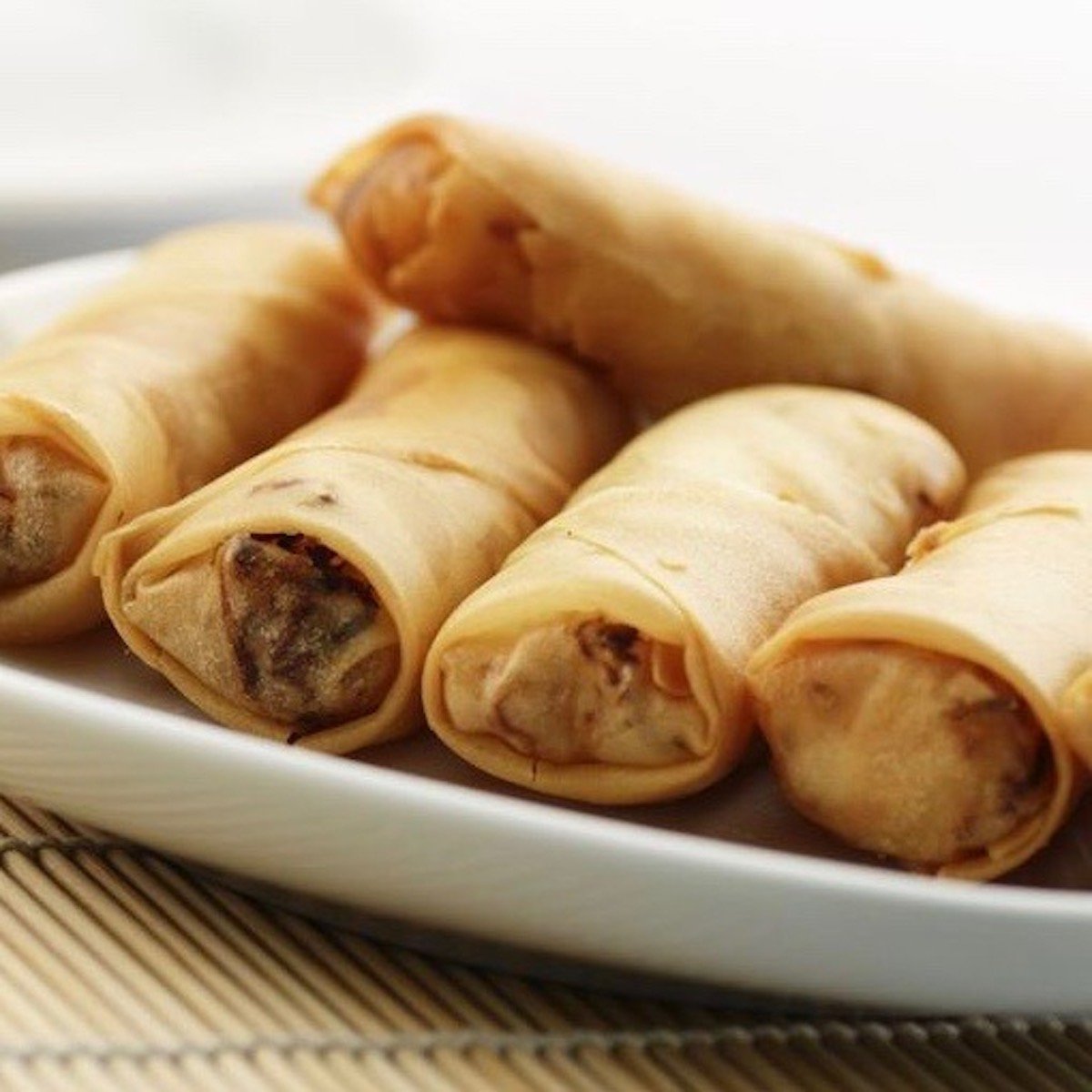


5 Responses
Sorry to bother. What is the name of the canape topped with smoked salmon, creme fraiche, caviar and a little sprig of dill. Seriously, I forgot. Thank you for your time.
Hi George, I don’t know of a specific name for them but hopefully someone will read your questions and post an answer. – RG
One with the best web sites for relevant information on this niche !
Why thank you Diesel – RG
What you’re thinking of are Blini’s I believe. Love this website RG!!!
Thanks Sue. – RG
i need starters, and deserts
Zucchini rounds picture, Please give recipe. Thanks